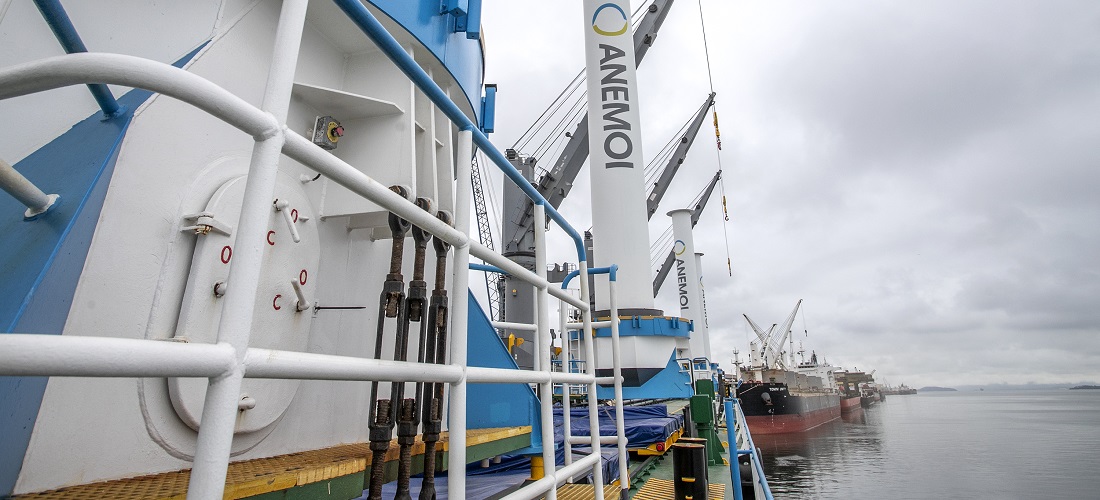
Vessel with innovative sustainable technology moors in Paranaguá
May, 03, 2022 Posted by Gabriel MalheirosWeek 202219
The vessel MV Afros, employed at fertilizer unloading operations at Port of Paranaguá’s berth 209, has drawn attention to the pier. The ship works with rotating sails that reduce fuel consumption and allow more speed in navigation, making it one of the bulk carriers with the best environmental performance on the planet.
The Marshall Islands-flagged vessel docked on April 26 in Paraguá after having sailed from the port of Klaipeda, in Lithuania, with 48 thousand tonnes of potassium chloride. On May 03, it sailed to Argentina and shall return to Paraná still this month.
According to Captain Sitaras Konstantinos, this is the first bulk carrier in the world to use a wind-assisted propulsion system. The vessel also has innovative systems that prevent bulk spills, oil spills, and work accidents.
He explained that the grabs – large claw-shaped ladles that help to load and unload the ship’s holds – are shaped in an uneven way that does not allow the bulk to drain.
The tank fans are elevated above the standard height to prevent accidents during refueling. “Other factors that make this ship stand out are the frequent tests of the winch brakes that pull the mooring cables and an on-board walkway to diminish the risks incurred at the personnel supervising the loading of the vessel’s hold.”
Innovation
The ‘Flettner rotor’ functions like an airplane’s wings, creating lift through aerodynamics. When the ship was initially tested in 2018, the first month’s fuel savings were 12.5%. The vessel cut carbon dioxide emissions by 235 tonnes by using 73 fewer tonnes of fuel.
This system was developed in the UK. Four large vertical rotors are placed on carriage structures, allowing them to be repositioned along the deck to facilitate ship operations.
The rotors work using the principles of the Magnus effect: when the wind passes around the rotating rotor, the air flow accelerates on one side and decelerates on the opposite side. The difference in airflow creates a buoyant force that propels the vessel.
A primary power source is still needed to turn the spark plugs. Still, the thrust produced significantly reduces the engine’s power need without losing operating speed, saving fuel and thus reducing gas emissions.
To ensure energy efficiency and speed gain, even the corners of the control towers and houses have differentiated aerodynamics. “They have no edges; they are rounded. Each detail has a purpose.”
-
Other Logistics
Sep, 12, 2019
0
Porto Murtinho (MS) undergoes transformation
-
Other Cargo
Apr, 18, 2023
0
Brazil’s 2022/23 cotton exports to fall unexpectedly
-
Other Logistics
Jun, 10, 2019
0
Bolivia and Paraguay to talk about maximising use of Paraguay-Paraná waterway
-
Ports and Terminals
Feb, 02, 2020
0
Bulk terminal at Paranaguá Port grew 20% in 2019 driven by corn exports


